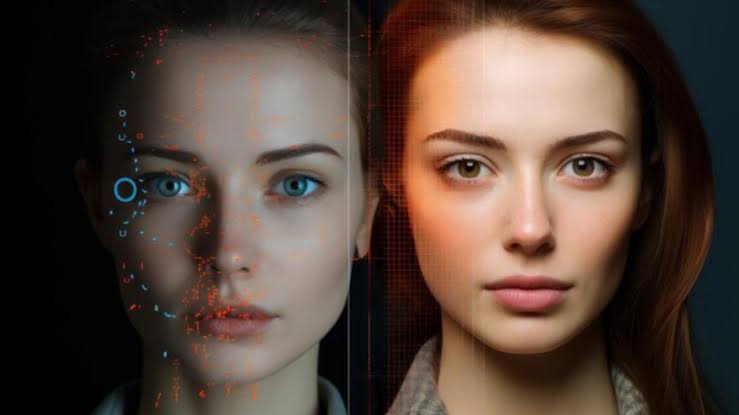Face swap technology has become a groundbreaking innovation in the realm of digital media. From its humble beginnings as a quirky feature in mobile applications, it has now evolved into a sophisticated tool utilized in various industries, including entertainment, security, and digital marketing. This article delves into the origins, development, and implications of face swap technology, focusing on its most popular applications, such as face swap videos and video face swaps.
The Origins of Face Swap Technology
Face swap technology, at its core, involves digitally replacing a person’s face with another in photos or videos. The concept can be traced back to the early 2000s when basic photo editing software allowed users to manually alter images. However, the real breakthrough came with the advent of machine learning and artificial intelligence (AI).
Early Photo Editing Tools
Before AI-powered face swap, users relied on rudimentary photo editing tools like Photoshop. While these tools offered basic face replacement capabilities, they required significant manual effort and expertise. The process was time-consuming, and the results were often far from perfect.
The Rise of Mobile Applications
The introduction of mobile applications marked a turning point for face swap technology. Apps like Snapchat and FaceApp popularized the concept by making it accessible to everyday users. These apps used facial recognition technology to automatically detect and replace faces in real-time, leading to the widespread creation of face swap videos and images.
The Mechanics of Face Swap Technology
Modern face swap technology leverages advanced AI algorithms and deep learning techniques to achieve seamless face replacements. Understanding the underlying mechanics is crucial to appreciate the complexity and potential of this technology.
Facial Recognition and Mapping
Facial recognition technology plays a pivotal role in face swap applications. It involves identifying and analyzing key facial features such as eyes, nose, mouth, and jawline. This data is then used to create a digital map of the face, which serves as the foundation for the swapping process.
Machine Learning and Deep Learning
Machine learning algorithms are trained on vast datasets of facial images to recognize patterns and similarities. Deep learning, a subset of machine learning, utilizes neural networks to process and analyze these patterns. This enables the technology to generate highly realistic face swaps by accurately matching facial features and expressions.
Real-Time Processing
One of the most impressive aspects of face swap technology is its ability to perform real-time processing. This is particularly evident in video face swap, where the technology continuously tracks and replaces faces as the video plays. Real-time processing requires immense computational power and efficient algorithms to ensure smooth and realistic results.
Applications of Face Swap Technology
Face swap technology has found applications in a wide range of fields, each leveraging its unique capabilities to achieve specific goals.
Entertainment and Social Media
The entertainment industry has embraced face swap technology to create engaging content. Social media platforms are flooded with face swap videos, where users swap faces with celebrities, fictional characters, or even friends and family. This trend has given rise to viral challenges and memes, further popularizing the technology.
Creating Viral Content
Face swap videos have become a staple in the world of viral content. Users can effortlessly create humorous or astonishing videos by swapping their faces with those of well-known personalities. The ease of use and the entertaining nature of these videos contribute to their rapid spread across social media platforms.
Enhancing User Engagement
For social media platforms, face swap technology is a powerful tool to boost user engagement. By offering interactive features and fun experiences, platforms can attract and retain users. The ability to create and share face swap video adds a layer of creativity and personalization to social media interactions.
Film and Television Production
In film and television production, face swap technology is used for various purposes, from special effects to continuity corrections. Directors and producers can seamlessly replace actors’ faces in post-production, ensuring consistent performances and saving time and resources.
Special Effects and CGI
Face swap technology has revolutionized the field of special effects and computer-generated imagery (CGI). Filmmakers can now create realistic face replacements for stunt doubles, aging actors, or even entirely digital characters. This enhances the visual storytelling experience and allows for greater creative freedom.
Ensuring Continuity
Maintaining continuity is crucial in film and television production. Face swap technology helps address continuity issues by allowing seamless face replacements in reshoots or scene alterations. This ensures a smooth and coherent narrative flow, even when actors are unavailable for additional filming.
Security and Privacy
While face swap technology offers entertainment and creative benefits, it also raises concerns about security and privacy. The potential for misuse, such as creating deepfake videos, has prompted the development of countermeasures to detect and prevent malicious activities.
Deepfake Detection
Deepfake videos, which use face swap technology to create realistic but fake videos, have become a significant concern. These videos can be used for misinformation, fraud, or personal harm. In response, researchers are developing advanced algorithms to detect deepfakes and protect individuals and organizations from their potential harm.
Enhancing Biometric Security
On the positive side, face swap technology can enhance biometric security systems. By integrating face recognition with other biometric data, such as voice or fingerprint recognition, security systems can become more robust and resistant to spoofing attempts. This adds an extra layer of protection for sensitive information and access control.
Ethical and Legal Implications
The rise of face swap technology brings with it a host of ethical and legal considerations. As the technology becomes more advanced and accessible, it is essential to address these issues to ensure responsible use.
Consent and Privacy
One of the primary ethical concerns is obtaining consent from individuals whose faces are used in face swap videos. Without proper consent, the use of someone’s likeness can infringe on their privacy and personal rights. Developers and users of face swap technology must prioritize obtaining explicit consent and respecting individuals’ privacy.
Misinformation and Manipulation
The potential for face swap technology to create misleading or manipulative content is a significant concern. Deepfake videos, in particular, can be used to spread false information, damage reputations, or influence public opinion. Addressing this issue requires a combination of technological solutions and regulatory measures to detect and mitigate the impact of manipulated content.
Legal Frameworks and Regulations
As face swap technology continues to evolve, legal frameworks must adapt to address its implications. Governments and regulatory bodies need to establish clear guidelines on the use, distribution, and detection of face swap videos. This includes defining legal consequences for the malicious use of the technology and protecting individuals’ rights in the digital age.
The Future of Face Swap Technology
The future of face swap technology holds exciting possibilities and challenges. Continued advancements in AI and machine learning will drive the evolution of this technology, leading to more sophisticated and realistic face swaps.
Advancements in AI and Machine Learning
As AI and machine learning algorithms become more advanced, face swap technology will achieve higher levels of realism and accuracy. This will open up new opportunities for creative expression, entertainment, and practical applications. Researchers and developers are continuously working on improving the technology’s capabilities, pushing the boundaries of what is possible.
Integration with Virtual and Augmented Reality
The integration of face swap technology with virtual and augmented reality (VR and AR) will create immersive and interactive experiences. Users will be able to swap faces in real-time within virtual environments, enhancing gaming, training, and social interactions. This fusion of technologies will redefine how we perceive and interact with digital content.
Addressing Ethical and Privacy Concerns
As face swap technology advances, addressing ethical and privacy concerns will remain a priority. Developers must implement robust safeguards to prevent misuse and ensure that individuals’ rights are protected. Collaboration between technology companies, policymakers, and advocacy groups will be essential to create a responsible and ethical framework for the use of face swap technology.
Conclusion
Face swap technology has come a long way from its early days as a novelty feature in mobile apps. Today, it stands as a powerful tool with diverse applications, from entertainment to security. While it offers exciting possibilities, it also poses significant ethical and legal challenges. As we navigate the future of face swap technology, it is crucial to strike a balance between innovation and responsibility. By doing so, we can harness the full potential of this technology while safeguarding individual rights and societal values.










